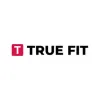Safesize
"Uses 3D scanning to match shoes accurately."
Focused on
Footwear
.
SafeSize uses 3D scanning and AI algorithms to help customers find shoes that fit perfectly. The system analyzes foot and shoe dimensions in real-time to recommend an ideal fit. It bridges the gap between online and offline shopping, ensuring customers get accurate advice for sports, fashion, and kids’ shoes.
Key Features & Benefits
proprietary 3D foot scanning
SafeSize claims that its proprietary 3D foot scanning technology analyzes foot anatomy to detect detailed foot dimensions for a precise fit.
3D shoe scanning accuracy
SafeSize claims that its 3D shoe scanning technology ensures highest fitting accuracy by capturing inner shoe dimensions for all footwear types.
AI-driven fit algorithm
SafeSize claims that its AI-driven algorithm matches 3D foot geometry with shoes, using real-time feedback for personalized fit recommendations.


